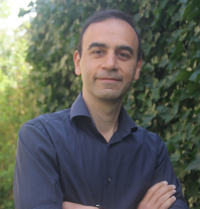FibroBot - diagnosing fatty liver disease
Fatty liver disease causes 3.3 million deaths a year worldwide, making the disease one of our biggest health challenges in the time to come.
Project period
Start: April 2022
End: December 2022
Today, fatty liver disease is often diagnosed and treated too late in terms of being able to limit complications, reduce hospitalisations, avoid costly and invasive procedures, and reduce the risk of premature death. Many complications and deaths associated with the disease could be prevented by more accurate diagnosis, more effective monitoring of the disease and effective treatment at the right time.
Therefore, this project wanted to explore the use of artificial intelligence and robot technology to develop improved diagnostic and clinical tools for diagnosing and treating fatty liver disease.
Aim
One of the best diagnostic tests within the field is Fibroscan, a probe for measuring fibrosis, scar tissue in the liver. The probe measures the level of fibrotic scarring in the liver through the use of ultrasound. The goal of this project was to develop a prototype of FibroBot, a robot that would be able to measure the level of scar tissue in the liver with a Fibroscan probe.
The project was divided into three phases:
- In the first phase, CAI-x built a set of AI-based ensemble models that could identify patients with asymptomatic fibrosis in the liver through, for example, blood tests. The work in this phase built on knowledge gained from the development of an algorithm for early diagnosis of cirrhosis of the liver as well as fibrosis.
- In the second phase, CCR built a prototype of FibroBot. FibroBot consisted of a robot arm fixed with a Fibroscan probe. The robot arm would be able to move the probe to the patient’s body and automatically generate scans. The robot arm would hold the probe completely still, thus making it possible to make very accurate measurements and generate accurate image data that could be used for the development of an algorithm. In addition, the robot arm would physically relieve staff, as they would no longer have to hold and push the probe during patient examinations.
- In the third phase, CIMT performed an early health technology assessment (HTA) based on the EARTH model.
The prototype and algorithm were expected to be used for the further development of scanning solutions for other organs.
Participants
The project was a collaboration with Centre for Clinical Robotics (CCR) and Centre for Innovative Medical Technology (CIMT).
CAI-X contributed to the project with our competencies within the field of artificial intelligence, while CCR contributed with their competencies within robot technology. Professor and Head of Research at CCR Thiusius Rajeeth Savarimuthu was project owner. CIMT contributed with competencies regarding early assessment of health technology based on the EARTH model.
FibroBot was anchored at FLASH – Centre for Liver Research, which is an elite research centre at the Department of Gastroenterology at Odense University Hospital.
Funding
The project was funded by the Region of Southern Denmark.

Thiusius Rajeeth Savarimuthu
Research Manager - Professor
Centre for Clinical Robotics (CCR). University of Southern Denmark, Maersk Mc-Kinney Moller Institute
(+45) 24 40 95 45 trs@mmmi.sdu.dk

Esmaeil S. Nadimi
Head of Technical Research - Professor
Centre for Clinical Artificial Intelligence (CAI-X). University of Southern Denmark, Maersk Mc-Kinney Moller Institute
(+45) 2778 1929 esi@mmmi.sdu.dk

Kristian Kidholm
Head of Research - Professor
Centre for Innovative Medical Technology (CIMT). Odense University Hospital, Dept. of Clinical Development - Innovation, Research & HTA
(+45) 6541 7960 kristian.kidholm@rsyd.dk
